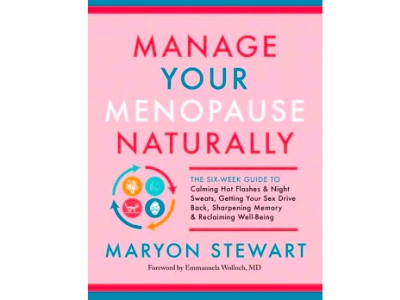 The seventh installment of Maryon Stewart’s weight loss guide is about portion sizes and controlling your intake.
The seventh installment of Maryon Stewart’s weight loss guide is about portion sizes and controlling your intake.
Recent government figures show that as a nation we are fatter than ever before and this means a good proportion of us are eating more than is good for our health. According to a survey carried out by the Department of Health in 2003, which came to light under the Freedom of Information Act, more than eight million Britons are now categorised as clinically obese, which puts them at risk of chronic illnesses including heart disease and diabetes.
The survey found that one-quarter of all adults are dangerously overweight and that there has been a 75 per cent increase in obesity in the UK during the past ten years, with the number of dangerously fat women increasing by 50 per cent and fat men by almost 75 per cent. And these figures are replicated throughout much of the Western world.
How did we get like this? Lack of exercise and unhealthy habits are partly responsible, but the main culprit is diet. We are simply eating far more calories than ever before and the body stores excess calories as fat. We also tend to consume more fat, which contains more calories per gram than any other food, expanding our waistlines even further.
You may well wonder how these trends have come about when millions of us start weight-loss diets each year. But, as we know, often from experience, most diets simply don’t work. We may lose the pounds in the short term but nine times out of ten the weight soon comes back once we return to normal patterns of eating and so begins the familiar pattern of yo-yo dieting. The only way to lose weight and keep it off is to follow a balanced eating and lifestyle plan.
The BMI test
The words ‘fat’ and ‘overweight’ are part of our everyday language, but the term obese isn’t so widely understood. If you are classified as obese this means that you are extremely overweight – to a measurable degree. The following equation will allow you to assess your Body Mass Index (BMI) and check to see whether you are overweight and, if so, to what degree. The grades are divided up into five sections, –1, 0, 1, 2 and 3. These are grades based on weight and height that are taken from the formula originally devised by a Belgian scientist, Quetelet. Quetelet’s Index, which is now more usually known as BMI, is widely used in the assessment of obesity. The formula is derived by multiplying your height in metres by itself and then dividing your weight in kilograms by this figure:

You can go to the website and fill in your details to get your BMI measurement. The categories are as follows:
–1: Score less than 20
0: Score 20–25
1: Score 25–30
2: Score 30–40
3: Score greater than 40
If your grade is –1, you are underweight.
Normal or ideal weight is grade 0.
Grade 1 is overweight, usually between 10 and 20 per cent above the ideal weight.
Grades 2 and 3 are regarded as obese – more than 20 per cent above the ideal weight.
Grade 2 and especially grade 3 obesity carry the greatest health risks. An adult with a BMI of 40 has three times the risk of dying in a year than someone whose weight is ideal. An individual with a BMI of 35 has approximately twice the death rate of his or her grade 0 counterpart. So, it’s not just a nice idea to shed those additional pounds permanently, it could be a matter of life or death.
For the majority who are just slightly overweight, at grade 1, the major reasons for dieting are cosmetic and to increase well-being. Many of us feel better psychologically when that spare tyre has been whittled away, and if the diet is combined with an exercise programme, there can be a very real improvement in feelings of overall fitness. Medically, there is little change in factors such as blood pressure and risk of heart disease, though there could be a moderate fall in blood cholesterol level if this is high at the start of the diet.
For those with grade 2 or 3 obesity, the potential benefits of losing weight are very real, and the psychological effects of a successful weight-loss programme can be dramatic. For example, normal employment may be very difficult for those who are grossly overweight, at grade 3 obesity.
People with grade 2 or 3 obesity do have a shorter life expectancy, and an increased risk of many illnesses, including diabetes, high blood pressure, heart disease, osteoarthritis, gout, gallstones, reduction in exercise tolerance/level of fitness and depression. Medical problems may be more difficult to treat in those who are obese. Gastrointestinal disorders, including indigestion, heartburn and constipation, may not be so easy to assess and the survival rate of an obese woman with breast cancer is lower than her slim counterpart.
Those who manage to return to normal or near-normal weight will stand a good chance of returning to a normal life expectancy and a reduction in their risk of medical problems associated with obesity, and certain problems including arthritis, gout, blood pressure, diabetes or blood cholesterol levels may be dramatically improved within a few months.
Metabolic syndrome
We know that being obese wrecks self-esteem and increases our risk of developing certain illnesses, but many people don’t know that where you store your excess fat is also important. You may hate being blessed with large hips that cause you to be a pear shape, but this is actually better for your health than being apple shaped. Apple shapes tend to store fat round the middle. Being overweight as well means that you are twice as likely to develop heart disease, especially if this runs in your family, as it is thought to be related to the inherited, metabolic ways in which you handle dietary fats and carbohydrates.
Metabolic syndrome, which according to the British Nutrition Foundation is a public health time bomb, is a condition in which the body becomes resistant to the effects of the hormone insulin and, as a result, increases the risk of developing heart disease and stroke. As many as one in five adults in some Western countries are victims, and it can result in premature death. Metabolic syndrome is either the result of inherited genes, or of diet and lifestyle factors, such as eating excessive amounts of sugar and refined carbohydrates, together with little or no exercise, which also increases the chances of becoming diabetic.
Body weight plays an important role in the development of this syndrome and with obesity spiralling out of control the problem is only set to get worse. When too many foods that raise blood sugar levels are eaten, more insulin is secreted to help push the excess glucose into fat cells for storage as body fat. This encourages the body to produce the classic apple shape. When body cells become increasingly insensitive to the effects of insulin, the pancreas is forced to produce increasing amounts of insulin to help maintain normal blood-glucose levels.
People with metabolic syndrome are basically overdosing on glucose and insulin and as a result develop a number of symptoms, including difficulty losing weight, tiredness and sugar cravings. Those with metabolic syndrome also tend to develop high blood pressure, raised LDL-cholesterol and a reduced ability to handle glucose. LDLs are low density lipoproteins and are designed to transport cholesterol around the body. However, too many LDLs can damage the arteries and place you at greater risk of heart disease.
Apple or pear shaped?
To work out if you are apple shaped, measure your waist and hips using a non-stretchable tape measure. Divide your waist measurement by your hip measurement to get your waist/hip ratio. For example, if your waist is 88 cm (341⁄2 in), and your hips are 100 cm (39 in), then your waist/hip ratio is 88/100 = 0.88. A waist/hip ratio greater than 0.85 is apple shaped for women; while a ratio greater than 0.95 is apple shaped for males.
In fact, waist size alone is also a good indicator of health. Men with a waist size of more than 94 cm (37 in), or 80 cm (311⁄2 in) for women, are most at risk of developing weight-related health problems, such as shortness of breath, high blood pressure, high cholesterol levels and diabetes, than those with slimmer waistlines. If your waist size is greater than 102 cm (40 in) for men or 88 cm (341⁄2 in) for women, the likelihood of having metabolic syndrome is very high.
However much weight you need to lose, my instructions will enable you to find the right kind of diet for your body so that you can overcome unwanted symptoms and lose weight effortlessly. It is based on over 20 years of clinical experience and has proved to be a successful method of finding out what suits your needs both in the short and long term. If you have been a yo-yo dieter for years, the thought of starting yet another diet may give you that déjà vu feeling. This experience will be different though, for although it may seem unbelievable at this point, this is will be the last diet you are every likely to need. Not only will the Real Life Diet help you to shed your unwanted pounds, but a ‘side-effect’ of the programme is also health, well-being and balance, as a result of following the diet carefully over a period of several months.









Make sure your diet includes plenty of calcium. You can get calcuim from milk, vegetables, cheese, sardines, soya milk, dried beans, and nuts. Calcium is a necessity for strong teeth and bones. Without enough calcium, you can get sick from a disease known as osteoporosis. This is a painful and debilitating condition that affects your bones. http://truehealthreport.com/metabolic-cookbook-review/
People simply don’t know how many calories they’re consuming. Once you start tracking your calories or even macros you’ll realize how much you’re actually eating.
Following a diet can be a good thing as it keeps you from over eating.
cindysdietreview.blogspot.com
“The survey found that one-quarter of all adults are dangerously overweight and that there has been a 75 per cent increase in obesity in the UK during the past ten years” – Such a concerning fact, I live in Australia and am seeing the same trend. It all about your diet when it comes to being in a healthy state.
Jonathan – StayHealthyLiveLife